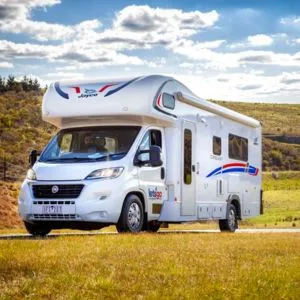
Today's top deals
At Finder Shopping, we want to help you explore the world and get the most out of every trip. So whether you're after the lowest prices on flights and hotels or the best time to visit a destination, we've spent countless hours doing the research so you don't have to.
Our team of avid travellers has been to more than 100 countries in every corner of the world and we're just itching to share some of the best wonders our planet has to offer.
Meet Finder's travel experts
Compare prices for your next trip
Made a search before? Retrieve your search results
Type or select country destination(s)
Popular Destinations
- Americas
- Asia
- Europe
- Pacific
- Africa
A small selection of brands we compare...
Our favourite travel deals websites

Groupon
- Book travel deals and hotel packages for up to 65% off
- Lock in the price and then choose when you travel with voucher offers
- Also book deals for activities and restaurants in your destination

Skyscanner
- Get access to over 1,200 travel providers
- Compare flight fares and other travel costs in one place
- Receive real-time Price Alerts on plane tickets

Luxury Escapes
- Exclusive travel deals with VIP inclusions and a best price guarantee
- Flexible payment and cancellation options
- 24/7 customer service
Lastminute.com.au
- Choose to pay now or later at your destination of choice
- Stay at brand-name hotels at discounted rates with Secret Hotels deals
- No cancellation fees
Expedia
- Over 271,000 hotels and 400 airlines to choose from
- Best price guarantee or Expedia will refund the difference
- No booking fees
Wotif
- Travel with local insights thanks to over 1.5 million reviews from Aussie travellers
- Enjoy exclusive offers and rewards when you sign up to be a Wotif member
- 24/7 customer support
Read more on this topic
-
Mother’s Day in Adelaide: Dining spots and things to do
Treat Mum to a delicious meal or surprise her with a day filled with fun activities on Mother's Day in Adelaide. See our top recommendations here.
-
Mother’s Day on the Gold Coast 2024: Dining, things to do, ideas
The top Mother's Day dining options that will top whatever your siblings had in mind.
-
Mother’s Day in Darwin: Dining options and things to do
Your guide to a perfect Mother’s Day in Darwin. We’ve rounded up the top things to eat, see and do on 12 May.
-
Best places to visit in October in Australia and overseas
Our top 7 Australian destinations to visit in the middle of spring, plus some international inspiration.
-
Australian traveller statistics: Historical data
Australians love to travel, but did you know that a third of us actually dislike flying? We take a look at the latest statistics to suss out what the average Australian traveller really looks like.
-
Thredbo: The ultimate travel guide 2023
Accommodation, dining and optimal times to hit the slopes at Thredbo, all in one handy place.
-
8 of the best Europe cruise lines for families
A guide to the best family-friendly liners that sail through Europe.
-
Travel News
The latest money-saving travel news from Australia and around the world. Includes flight sales, travel disruptions, frequent flyer updates and more.
-
Best cruises for young adults looking for adventure in 2024
Cruising is a great vacation option for young adults and modern ships are full of enough activities, bars and nightlife to keep you entertained through your whole trip.
-
Best Vivid Sydney Cruises for 2024
Get the most out of Vivid Sydney this year and hop on a Vivid cruise for the best views of the Opera House, Harbour Bridge and more.


























